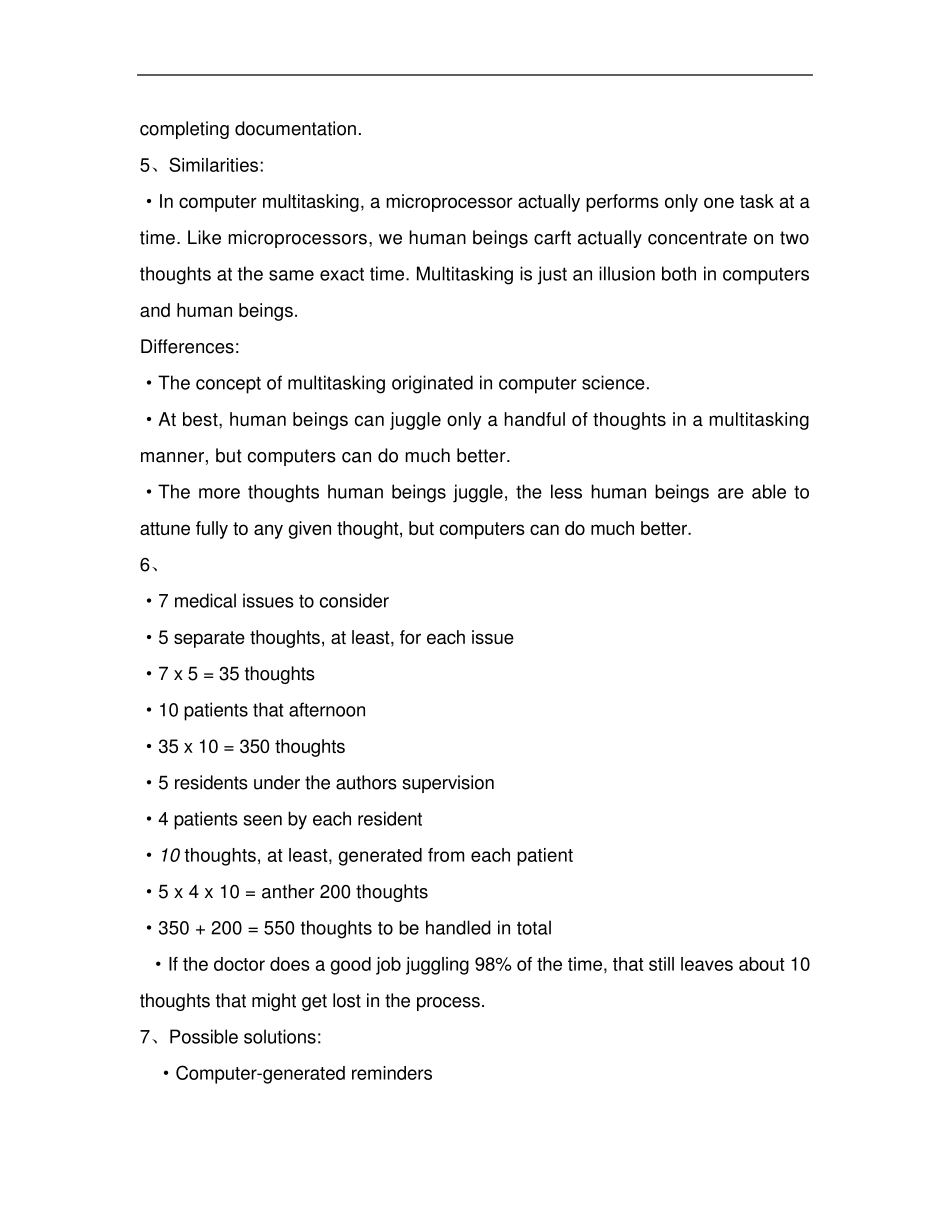Unit1 1、Some factors that may lead to the complaint: ·Neuron overload ·Patients* high expectations ·Mistrust and misunderstanding between the patient and the doctor 2、 Mrs. Osorio’s condition: ·A 56-year-old woman ·Somewhat overweight ·Reasonably well-controlled diabetes and hypertension ·Cholesterol on the high side without any medications for it ·Not enough exercises she should take ·Her bones a little thin on her last DEXA scan 3、 Good things: ·Blood tests done ·Glucose a little better ·Her blood pressure a little better but not so great Bad things: ·Cholesterol not so great ·Her weight a little up ·Her bones a little thin on her last DEXA scan 4 4、The situation: ·The author was in a moderate state of panic: juggling so many thoughts about Mrs. Osorio’s conditions and trying to resolve them all before the clock ran down. · Mrs. Osorio made a trivial request, not so important as compared to herconditions. ·Mrs. Osorio seemed to care only about her “innocent — and completely justified —request”: the form signed by her doctor. ·The doctor tried to or at least pretended to pay attention to the patient while completing documentation. 5、Similarities: ·In computer multitasking, a microprocessor actually performs only one task at a time. Like microprocessors, we human beings carft actually concentrate on two thoughts at the same exact time. Multitasking is just an illusion both in computers and human beings. Differences: ·The concept of multitasking originated in computer science. ·At best, human beings can juggle only a handful of thoughts in a multitasking manner, but computers can do much better. ·The more thoughts human beings juggle, the less human beings are able ...


